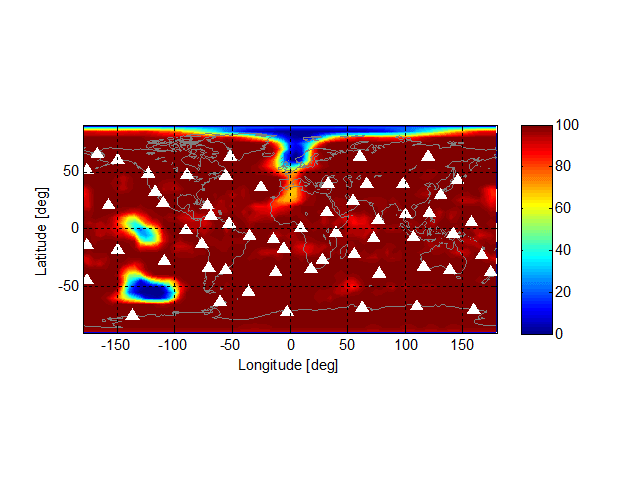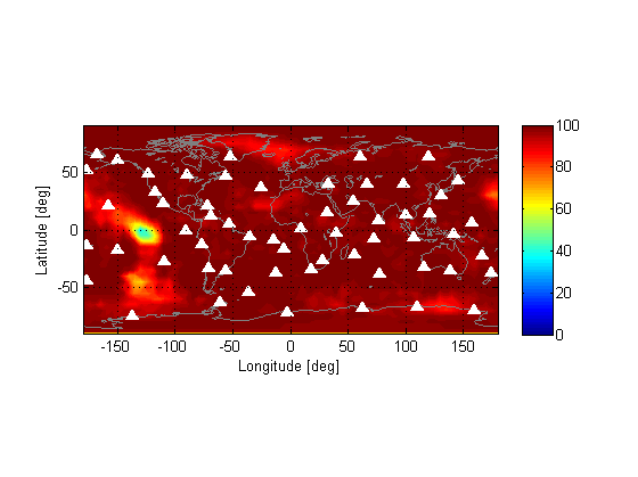Uplink Scheduling for Galileo
| 656 - Abstract: |
| With the provision of Galileo commercial services, stringent requirements for the dissemination are foreseen. An improvement of the dissemination performance can be reached either by increasing the available ground segment resources or by using an algorithm to efficiently schedule the contact between ground and space segment. In the following, the European Space Agency proposes an uplink scheduling algorithm (ULSC), which is tailored to the dissemination requirements. License agreements are sought. |
Description:
The European Space Agency proposes a method for determining a schedule for the contact between ground and space segment. An uplink scheduling algorithm allows to meet the stringent dissemination requirements for Galileo commercial services.
For the computation of an efficient contact plan, three different types of dissemination requirements are considered, i.e.:
- Maximum gap duration between two subsequent contacts (for each satellite)
- Minimum contact duration of each contact
- One of more link availability requirements
The third requirement is of especially relevant for Galileo commercial services. These specifications are met by allocating the satellites, which maximize the union of the coverage areas of connected satellites. Hence, a number of satellites is allocated to the available ground segment antennas and connected in a one-to-one relationship for a specific timeframe. The subset of satellites are selected to have a maximum spatial diversity and allow to minimise the number of handovers.
The selection techniques are computationally efficient and do not require to calculate all possible combinations of satellites. The technique is beneficial when the ground segment resources are limited and, hence, not all satellites can be permanently allocated.
In comparison to state-of-the-art uplink algorithms, which are currently implemented in ground segment, the duration of the gaps between the satellite contacts is reduced by 50% by the proposed algorithm. The efficiency of resource usage increases. Figure 1 shows the percentage of time with at least two connected satellites in view for a state-of-the-art algorithm. In comparison, Figure 2 depicts the percentage of time with at least two connected satellites in view for the proposed solution. The improvement of the new ULSC is noticeable.
The proposed invention allows the improvement of the dissemination performance of the Galileo system without the need to enhance the ground segment infrastructure. Hence, costs of the ground segment infrastructure can be saved.
The ULSC can also be used in any satellite communication system, where the union of the coverage areas of connected satellites is to be maximised.
Innovations and advantages:
The proposed method is an innovative algorithm allowing an improved allocation of the Galileo satellite system. The solution has the following advantages:
- Dissemination requirements better met
- Computational and resource efficient
- Improvement of performance and possibly reduction of uplink infrastructure
- Reduced costs for ground segment
Domain of application:
Communication service providers, but also non-space industries might be interested in the invention. Potential domains of application are:
- Galileo system
- Other satellite communication systems
- Process scheduling in non-space industries






